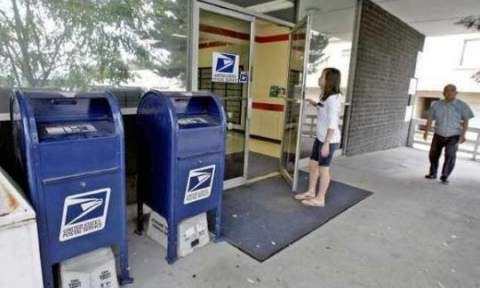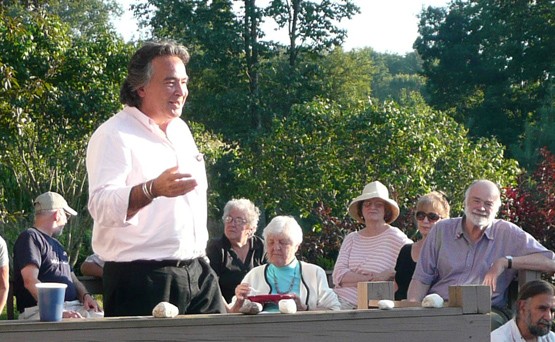Staterun banks a movement driven by unusual politics (Banking for public benefit)
Post on: 22 Июнь, 2015 No Comment

The Bank of North Dakota’s headquarters in Bismarck.
Bank of North Dakota
During Tea Party champion Joe Read’s first session in the Montana Legislature, in 2011, he drew widespread ridicule for introducing a bill that declared global warming beneficial to the welfare and business climate of Montana. With another anti-science bill, Rep. Read called for Montana’s government to overrule federal regulations on greenhouse gases. He also passed out 170 DVDs of The Secret of Oz. a low-budget video charging that the Federal Reserve system has been corrupted by corporate bankers, symbolized by the Wicked Witches in the original Wizard of Oz .
The DVDs were part of Read’s attempt to create the Last Chance State Bank, named for a gulch where gold was mined in the 1800s. The colorful name also cut to the urgency of Read’s banking concerns: Desperate to fix a broken fiscal system, he envisioned that the Last Chance State Bank would be run by Montana’s government.
None of those bills became law, but the bank measure attracted a surprising supporter — Rep. Sue Malek, a Democrat who represents Missoula, a college town. Malek herself sponsored a bill supporting the state-bank idea (which also went nowhere), and Read wholeheartedly supported it.
A similar unusual political alignment took shape in Arizona, where Rep. John Fillmore, who brands himself an ardent small government conservative, championed bills to create an Arizona state bank in 2011, and was asked to speak on the issue at a Tucson meeting of The Progressive Democrats of America.
In Colorado, Bob Bows of the nonprofit Public Banking Institute, founded in 2011, has allied with Marilyn Barnewall, a retired banker active in a Tea Party group called the Save America Foundation, in a fledgling effort to place a state-bank initiative on the 2013 ballot.
They’re all part of a growing movement to establish public, state-run banks. Since 2010, legislative attempts have been made in 20 states, nine of them in the West, bolstered by grassroots support from small businesses, farmers and labor unions. Some advocates are outraged at the impact of Wall Street greed on local economies; others, like Read, seek independence from the Fed and its imaginary money. But they all agree that states should have more control over their funds and put them to work locally. They even have a model for what they hope to achieve — the Bank of North Dakota, or BND, the nation’s only state-owned bank.

Apopulist uprising established North Dakota’s state bank in 1919, determined to liberate farmers from an out-of-state cartel of grain brokers, railroad tycoons and private bankers. The Bank of North Dakota’s role has changed over time, but it’s held fast to its mission of promoting agriculture, commerce, and industry, by plowing state funds back into local economic development.
The Bank of North Dakota is unique in how it gets its money: By law, the state is required to use it as the depository for all taxes and other revenue. (Some counties and cities also participate, although few individuals do.) Even for a sparsely populated state, that amounts to a pile of money: In 2011, the BND’s $5.3 billion in assets made it North Dakota’s second-largest bank.
From its single office in Bismarck, the BND does plenty of normal bank business. Mostly, however, it makes loans — to students and small businesses, farmers and ranchers, affordable-housing developers and disaster-stricken homeowners. The loans are designed to serve public need, so the terms are generally more favorable than private banks’. Some of the loans are made directly by the BND, but more commonly they’re made in partnership with local banks. In such cases, the BND essentially subsidizes the loan in a sort of bulk discount backed by state funds, lowering the interest rate or extending the period of repayment. As a result, small banks are able to make loans they otherwise wouldn’t — whether because of risk, low payoff, or the loan’s large size.
Neil Effertz got a Beginning Farmers Loan from the BND 20 years ago to help establish his farm along the Missouri River. We didn’t have the collateral to go to a regular bank and get that kind of money, he says. Then in 2011, when his alfalfa was flooded by six feet of water, he went to a local bank and got a low-interest-rate BND Farm Disaster Relief Loan.
BND loans aren’t a handout; they actually profit the state. The bank has been in the black every year since 1971, earning $70 million in 2011. More than half of the profit goes back into the state’s General Fund, offsetting North Dakotans’ taxes. The rest goes toward more loans, not CEO bonuses, because BND execs are modestly salaried public officials.
Other states have similar loan programs, but the money is typically divvied out through legislation in a less-nimble, less-profitable process, according to state-bank advocates. And those states mostly rely on a handful of huge corporate banks to hold their revenues and investments –– even for basic day-to-day tasks like transferring money to businesses and citizens. The corporate banks tend to invest in whatever is expedient and most profitable, sometimes even betting against state bonds. In the current recession, they’ve also cut back on loans across the board.














